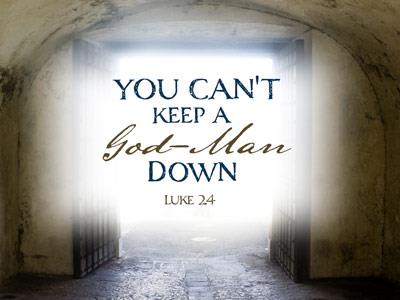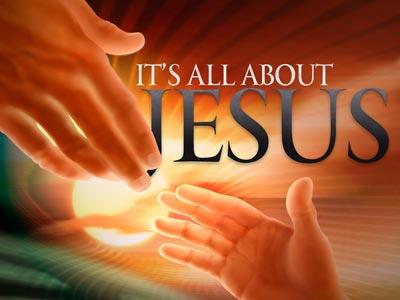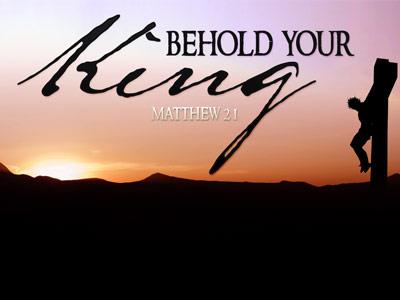-
The Cross Part 1: The Paradox Series
Contributed by Rob Culler on Nov 28, 2017 (message contributor)
Summary: Jesus set an example and challenged us with the idea that we must die to live and we must lose our life to save it.
The Paradox of the Cross
I. Introduction
Today, we will begin a series of messages concerning a topic that is absolutely critical to our faith. It is a topic that is sometimes a source of confusion and disbelief as well as comfort and inspiration. To some this topic is no big deal while there are others who go too far in the opposite direction. They can easily neglect other tenets of faith because of the elevated importance they give to this topic. Surprisingly, it is popular—in a relative sort of way—with non-believers as well as believers.
Actually, what we will be dealing with is more a symbol than a topic. This symbol is present here this morning and there is perhaps an 80% chance that in one form or another you will see it somewhere else today. However, because its appearance is so commonplace, it is easily overlooked as anything important, let alone sacred.
This symbol has taken many forms over the years. And in different ages, there have been those who have used it to give unjust credence to their immoral and illegal actions. It was a symbol of misguided zeal in the dark ages. A sign of perverse arrogance since the 1930s and ‘40s and a blasphemous symbol of racial injustice in the history of our own country.
Our topic for the next few weeks will be THE CROSS!
II. Transition
By a show of hands, is there anyone this morning who is wearing a piece of jewelry with a cross on it? Look around when you are out and about. You may be surprised at the number of different places you will see a cross. Certainly on churches and other religious items, but also around the necks of those who have no relationship with Christ. You will see it in homes and even businesses of the saved and unsaved alike. You will see it hanging from rear-view mirrors. In fact, you will see it so much that you may conclude it is viewed more like a good luck charm than the sacred symbol that it is.
Obviously, the cross is a symbol of the death of Jesus. The act that made it possible for our sins to be forgiven and for us to have a restored relationship with God. There are many ideas connected to the cross in Scripture. That’s what we will look at over the next few weeks. Today, we will consider THE PARADOX OF THE CROSS.
III. Text—Matthew 16:24-26
“Then Jesus said to his disciples, ‘If anyone would come after me, he must deny himself and take up his cross and follow me. For whoever wants to save his life will lose it, but whoever loses his life for me will find it. What good will it be for a man if he gains the whole world, yet forfeits his soul? Or what can a man give in exchange for his soul?”
IV. Prayer
V. The Paradox of the Cross
A. Definition of Paradox—a seemingly contradictory statement that expresses a possible truth
B. Examples of paradox
1. Love hurts
2. Money is worthless
3. Less is more
4. You have to spend money to make money
5. A paradox is sometimes closely related to an oxymoron
a. a word, statement or phrase that is seemingly contradictory
b. Examples
(1) Almost exactly
(2) Authentic replica
(3) Clean fill dirt
(4) Cold sweat
(5) Freezer burn
(6) Friendly fire
(7) Hard water
(8) Jumbo shrimp
(9) Liquid gas
(10) Near miss
(11) Pretty ugly
(12) Same difference
6. REMINDER: A paradox is a seemingly contradictory statement that expresses a possible truth. With that in mind, let’s look at…
C. The Meaning of the cross in Jesus’ time
1. The cross was an instrument of public torture and death reserved for the worst offenders of the law.
2. Before being bound to the cross with ropes, nails or both, the offender would undergo preparatory punishment—often a beating that could cause death on its own.
3. The Romans would then have the individual carry their own cross to the place of execution.
4. After the cross was raised in its public position, death rarely took place within 36 hours. That means an individual was left to suffer..
a. Mockery
b. The elements
c. Pests
d. Fatigue
e. Exhaustion
f. Suffocation
5. If death did not take place soon enough, the legs would be broken so as to prevent the criminal from pushing up to get a breath.
6. D.G Burke writes in THE INTERNATIONAL STANDARD BIBLE ENCYCLOPEDIA, “Conventional and widespread use of the cross as a common Christian symbol makes it difficult for contemporary readers to sense the harsh reality that underlies this [act. However]…any audience in the Greek-speaking world would have known immediately that…Christ had suffered an especially agonizing and humiliating death.”

 Sermon Central
Sermon Central



